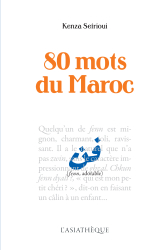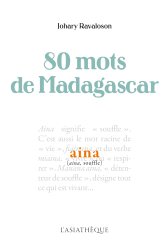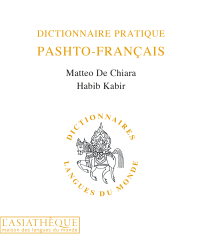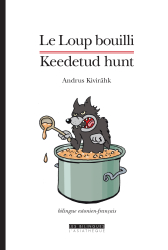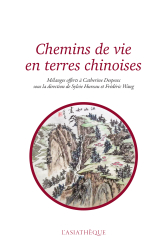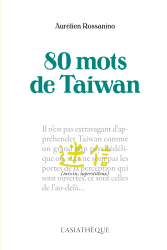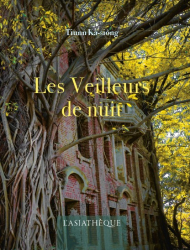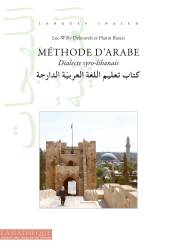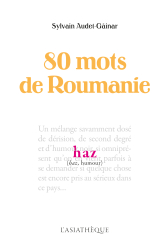Details
Format: Paperback
ISBN: 9782915255669
Collection: Dictionnaires L&M - Langues O'
13.5 x 21.5 cm
Weight: 1200 gr
Pages: 1696
Edition :
2013
First publication: 25/01/2002
Last printing: 09/2013
Dictionnaire français-khmer
This dictionary contains approximately 17,000 entries, and begins with an introduction describing the development of the language. The words are given in both the Khmer writing system and in phonological transcription. Entries specify the context in which certain words are used, and when necessary also explain the level of formality of the words, whether they are regionalisms, and which specific parts of society they are used by, such as by monks or by the royal family. A number of new and recent words are also included.
CONTRIBUTORS' BIOGRAPHIES
Michel Antelme
Michel Rethy Antelme is responsible for the Khmer section at INALCO.
Hélène Bru-Nut
Hélène Suppya Bru-Nut, titulaire d'un DEA en Etudes indiennes à l'université de Paris-III, est chargée de cours de khmer (cambodgien) à l'Inalco et à l'Universität zu Köln.
TABLE OF CONTENTS
Remerciements pour la deuxième édition (Acknowledgements for the second edition)
Remerciements pour la première édition (Acknowledgements for the first edition)
AVANT-PROPOS (FOREWORD)
INTRODUCTION
I. LA LANGUE KHMÈRE : GÉNÉRALITÉS
I.1. Répartition géographique (Geographical distribution)
I.2. Histoire de la langue (History of the language)
I.2.1. Les différences périodes (Period differences)
I.2.2. Le vieux khmer et le sanskrit (Old Khmer and Sanskrit)
I.2.3. Le khmer moyen et le pali (Middle Khmer and Pali)
I.2.4. Le khmer et le siamois (Khmer and Siamese)
I.2.5. Emprunts à d'autres langues (Loan words from other languages)
I.3. Le khmer moderne et son évolution (Modern Khmer and its evolution)
I.3.1. Créations et emprunts populaires (Creations and popular derivatives)
I.3.2. Intervention des lettrés (The intervention of the educated)
I.3.3. L'influence du français dans l'élite (The influence of French among the elite)
I.3.4. La khmérisation du système éducatif (The Khmerisation of the education system)
I.3.5. Evolution linguistique de 1975 à 1989 (Linguistic evolution from 1975 to 1989)
I.3.6. L'évolution actuelle (Current evolution)
I.3.7. Les divers facteurs jouant sur l'avenir de la langue (The diverse factors at play with respect to the future of the language)
I.3.8. Choix du vocabulaire dans le présent dictionnaire (Choice of vocabulary in the present dictionary)
II. Phonétique et phonologie du khmer
II.1. Les consonnes initiales (Initial consonants)
II.2. Les groupes consonantiques (Consonant groups)
II.3. Les consonnes finales (Final consonants)
II.4. Les voyelles (Vowels)
II.5. Syllabe et structure du mot (Syllable and word strucutre)
II.5.1. Les dissyllabes en prononciation de lecture (Dissyllables in read pronunciation)
II.5.2. Les dissyllabes dans la prononciation courante (Dissyllables in modern pronunciation)
II.5.3. Les polyssylabes (Polysyllables)
III. Écriture et orthographe (Writing and spelling)
III.1. L'origine de l'alphabet khmer et son évolution (The origins of the Khmer alphabet and its evolution)
III.2. Les différents types d'écriture khmère (The different types of Khmer writing)
III.3. L'orthographe et sa réforme (Spelling and its reform)
III.4. Les signes consonantiques (Consontant signs)
III.5. Les consonnes souscrites (Subscript consonants)
III.6. Les signes-voyelles et les règles de prononciation (Vowel signs and the rules of pronunciation)
III.7. Les "voyelles pleines" ("Full vowels")
III.8. Autres signes diacritiques (Other diacritic signs)
III.9. Les chiffres (Numbers)
IV. Aperçu grammatical (Grammatical overview)
IV.1. Structure de la phrase (Structure of a sentence)
IV.1.1. La phrase simple (The easy sentence)
IV.1.2. La subordonnée (The subordinate clause)
IV.1.3 L'ordre des mots (Word order)
IV.2. La possession (Possession)
IV.3. Le pluriel (Plurals)
IV.4. Le genre (Gender)
IV.4.1. Le genre dans les cas des mots "culturels" (The gender of "cultural" words)
IV.5. Les verbes (Verbs)
IV.5.1. Verbes d'action (Action verbs)
IV.5.2. Verbes d'état (Verbs of states of being)
IV.5.3. L'action en devenir (The action of becoming)
IV.5.4. Les causatifs (Causatives)
IV.5.5 Préverbes du vocabulaire royal (Preverbs from royal vocabulary)
IV.6. Les équivalents des adverbes français (The equivalents of French adverbs)
IV.7. Les substantifs français et leurs équivalents khmers (French substantives and their Khmer equivalents)
IV.8. La négation (Negation)
IV.9. L'impératif (Imperatives)
IV.9.1. L'impératif affirmatif (Affirmative Imperatives)
IV.9.2. L'impératif prohibitif (Prohibition)
IV.10. L'interrogation
IV.11. Le temps (Tense)
IV.11.1. Le passé (Past)
IV.11.2. Le futur (Future)
IV.11.3. Le présent progressif (The progressive present)
IV.11.4. L'aspect duratif (The durative aspect)
IV.12. La dérivation
IV.13. Les classificateurs et les quantifieurs (Classifiers and quantifiers)
IV.14. Les mots composés et les termes euphoniques (Compound words and euphonic terms)
IV.15. Les intensifs (Intensives)
ABRÉVIATIONS
DICTIONNAIRE
A - B - C - D - E - F - G - H - I - J - K - L - M - N - O - P - Q - R - S - T - U - V - W - X - Y - Z
BIBLIOGRAPHIE NON EXHAUSTIVE
I. Dictionnaires et lexiques
II. Articles et ouvrages divers

